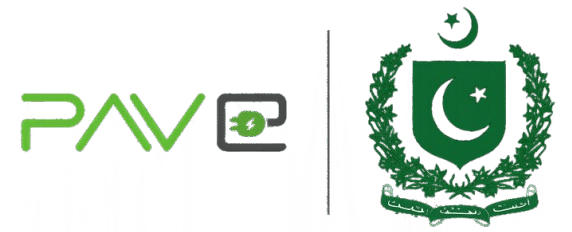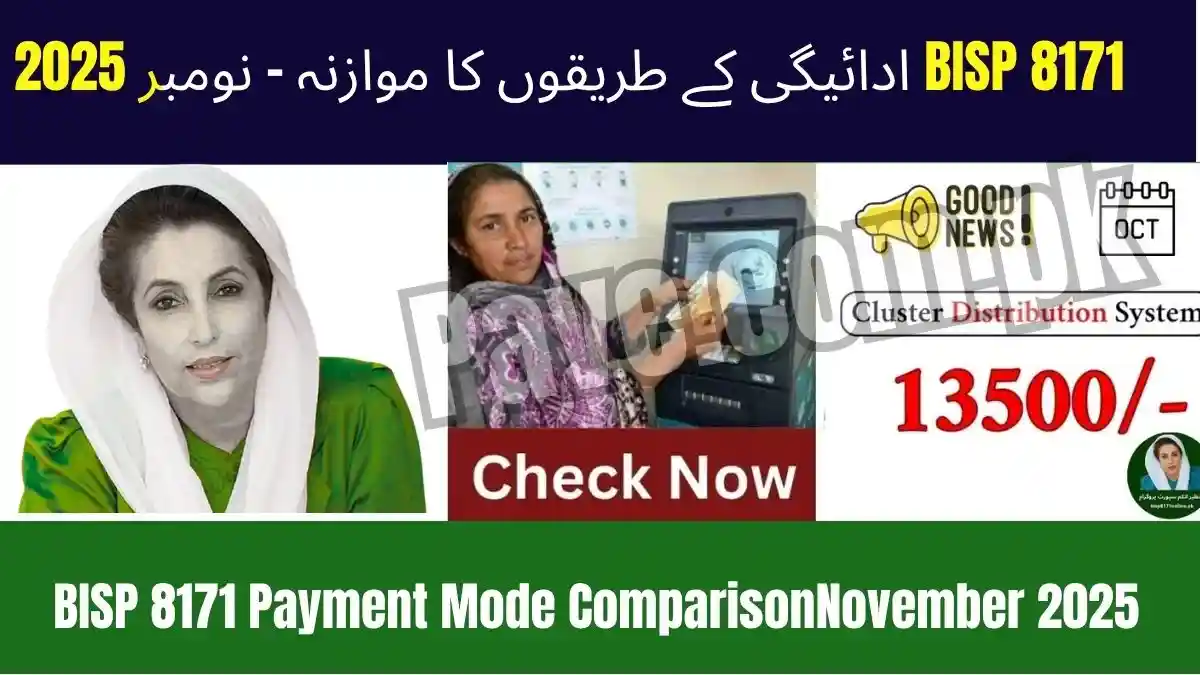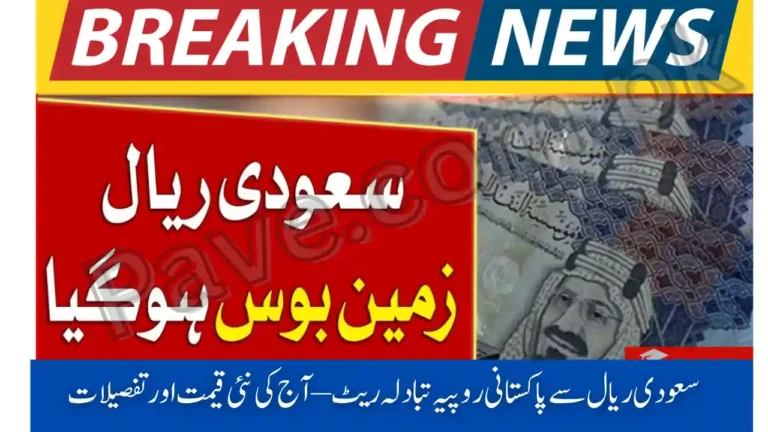BISP 8171 Payment Mode Comparison November 2025 – Cash, Bank, Wallet
The BISP 8171 Payment Mode ComparisonNovember 2025 continues to evolve its financial payment system to provide greater convenience, security, and transparency to eligible households across Pakistan. As the number of beneficiaries grows, the government has introduced multiple payment modes, including Cash Payments, Bank Transfers, and Mobile Wallets. Each payment mode offers unique advantages, limitations, and accessibility options. Understanding how these methods function can help beneficiaries make the best financial decision and avoid unnecessary challenges.
Historically, cash payments were the most common method, distributed through authorized payment centers and retailers. However, these centers often faced overcrowding, biometric failures, and unauthorized deduction complaints. To overcome these issues, BISP expanded toward digital modes of payment, enabling beneficiaries to access funds through partner banks across the country.
Read Also: Breaking News: Punjab Govt Launches Teacher License Program
Mobile banking wallets are the BISP 8171 Payment Mode ComparisonNovember 2025 latest addition, offering instant access to payments without the need to travel. Many beneficiaries use digital wallets to receive funds, transfer money, or make utility bill payments through their mobile devices. This method particularly benefits rural households, women, and elderly individuals who struggle with long-distance travel.
Today, the combination of BISP 8171 Payment Mode ComparisonNovember 2025 cash counters, bank withdrawals, and wallet services provides beneficiaries with flexibility. While cash is easier to understand for many users, banks offer secure storage and instant balance inquiries, and mobile wallets provide convenience with minimal effort. The government is continuously evaluating data to improve speed, reduce corruption, and simplify verification procedures.
Check Also: 8171 BISP Low-Income Family Support
By comparing these three modes, this article highlights which payment method is best suited for various types of beneficiaries and how to avoid fraudulent practices.
✅ Eligibility Criteria for Receiving BISP Payments:
To receive payments through any mode, beneficiaries must meet these requirements:
- Valid CNIC registered with NADRA
- Complete NSER survey verification
- Household income below the poverty threshold
- PMT score approved by BISP criteria
- No involvement in tax-paying government employment
- No fraudulent benefit duplication attempts
- Registered mobile number for SMS notifications.
Read Also: Breaking News: Punjab Govt Approves 100000
🌟 Benefits of Multiple Payment Modes
- Increased convenience for rural and urban residents
- Reduced waiting time at crowded payment centers
- Safer storage of financial assistance
- Real-time balance checking in bank/wallet systems
- Faster complaint resolution for deductions
- Gender-inclusive financial access for women
- Cashless alternative for bill payments and mobile recharges
📝 Application Process How to Access New Payment Options
Beneficiaries can follow the steps below:
- Complete your NSER household verification at the Tehsil Office
- Receive eligibility confirmation via SMS from 8171
- Visit an authorized retailer or partner bank to activate your payment mode
- Complete biometric verification to link your CNIC
- Deposit or withdraw funds based on the preferred method
- Access mobile wallet onboarding if available
- Track payment history online through the 8171 portal or app.
💰 Cash Payment Advantages
- Quick withdrawal from nearby retailers
- No ATM card or mobile literacy required
- Instant acknowledgement through SMS alerts
Disadvantages
- Crowded centers
- Unauthorized deductions possible
- Biometric failures may cause delays
🏦 Bank Transfer Advantages
- More secure than retail cash handling
- Can check balance through ATM machines
- Transaction history saved digitally
Disadvantages
- Requires ATM literacy
- Limited bank access in remote villages
📱 Mobile Wallet Advantages
- Instant access without traveling
- Can pay utility bills digitally
- Easy transfers to family members
Disadvantages
- Requires smartphone access
- Digital literacy needed
- Network outages can delay payments
📌 Which Payment Mode Is Best?
| Payment Type | Best For | Concern |
|---|---|---|
| Cash | Elderly & uneducated | Risk of agent deductions |
| Bank | Secure saving & tracking | ATM learning required |
| Wallet | Instant digital access | Internet & literacy needed |
🧾 Security Tips
- Never share CNIC with unknown agents
- Use official BISP counters only
- Always demand a printed receipt
- Avoid private mobile wallet apps not linked to BISP
🔚 BISP ATM withdrawals 2025 Conclusion:
The BISP 8171 payment ecosystem has significantly improved over recent years by introducing multiple withdrawal options based on beneficiary needs and location. Cash withdrawals remain the most accessible due to simple verification and the ability to withdraw funds instantly. However, these centers often face issues like crowding, biometric errors, and fraudulent deductions by unauthorized retailers.
Bank transfers provide increased security, allowing users to maintain their funds safely until needed. Through ATMs, beneficiaries can withdraw smaller amounts in intervals rather than collecting the entire installment at once. This method is ideal for those who want better financial control and secure record-keeping.
Mobile wallets represent the future of financial inclusion in Pakistan. They provide access to digital payment features, including utility bill payment, mobile recharge, and inter-family transfers. For rural women who may not have a bank branch nearby, a mobile wallet can be a powerful financial tool.
Despite the benefits, digital literacy remains a challenge. Beneficiaries must learn how to use mobile applications securely and avoid clicking on unknown links. This highlights the importance of awareness campaigns to educate users about safe financial practices.
In comparison, all three modes serve different needs, making the BISP system flexible and inclusive. No single method can be called “perfect,” but together, they increase accessibility, reduce fraud, and ensure timely disbursement.
In conclusion, beneficiaries should evaluate their financial needs, location, accessibility, and technological comfort level before choosing a payment method. With government transparency increasing each year, digital payment adoption is expected to grow rapidly.
❓ Secure payment options BISP FAQs:
1. Which payment mode is safest?
Bank transfers are generally the most secure.
2. Can I switch my payment method?
Yes, visit the Tehsil office for information.
3. Are mobile wallet payments available everywhere?
Rollout varies by district and supporting telecom networks.
4. Do I need an ATM card for bank payments?
Yes, for ATM withdrawals.
5. Why do retailers deduct money?
Unauthorized deductions should be reported immediately.
6. Is biometric verification required every time?
Usually yes, especially for cash withdrawals.
7. Can I receive payments on someone else’s phone?
What if I lose my SIM
8. What if I lose my SIM?
Update your contact information at the Tehsil office.
9. Can payments be saved digitally?
Yes, banks and wallets store funds securely.
10. Are these services free?
Yes, BISP does not charge any transaction fee.







